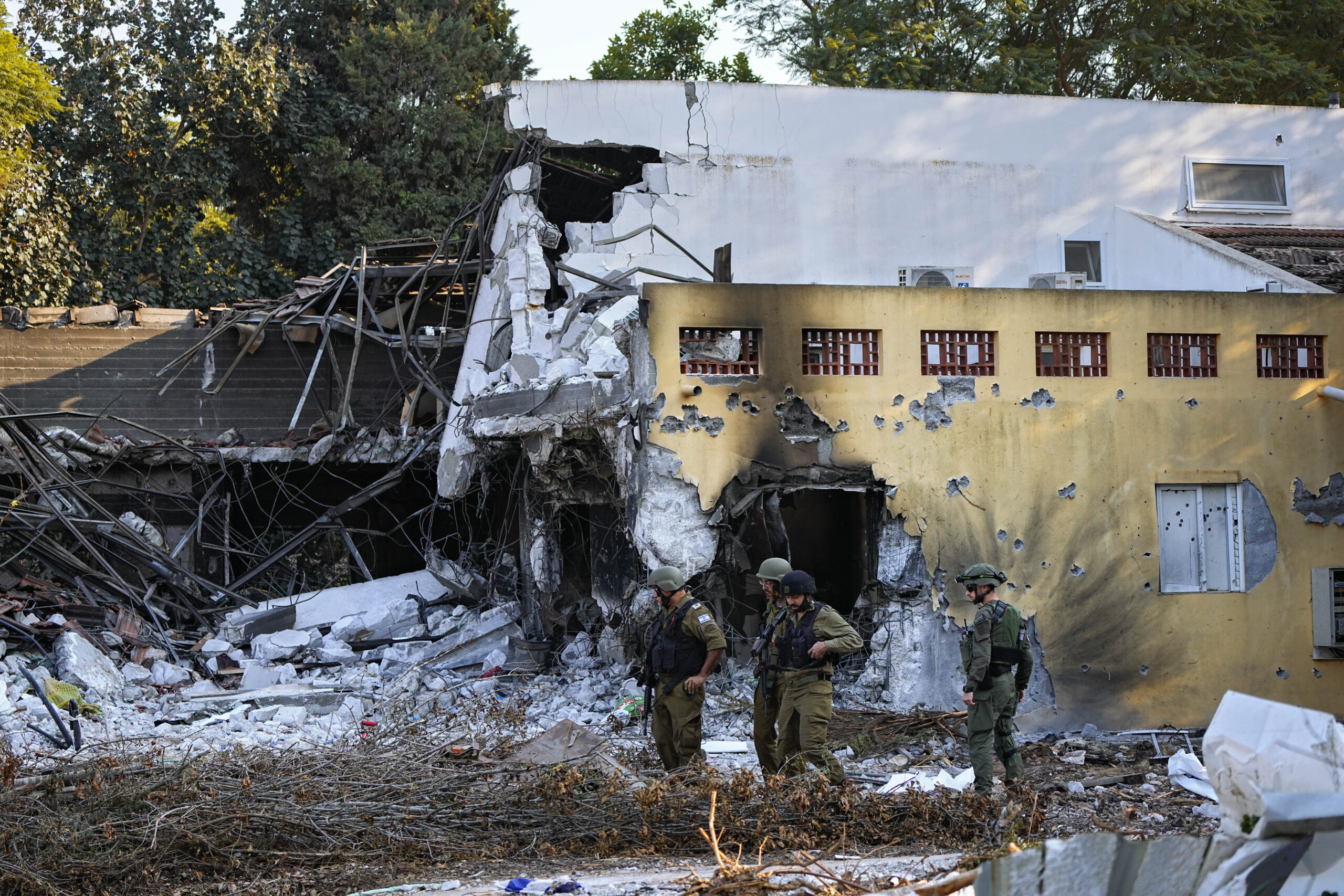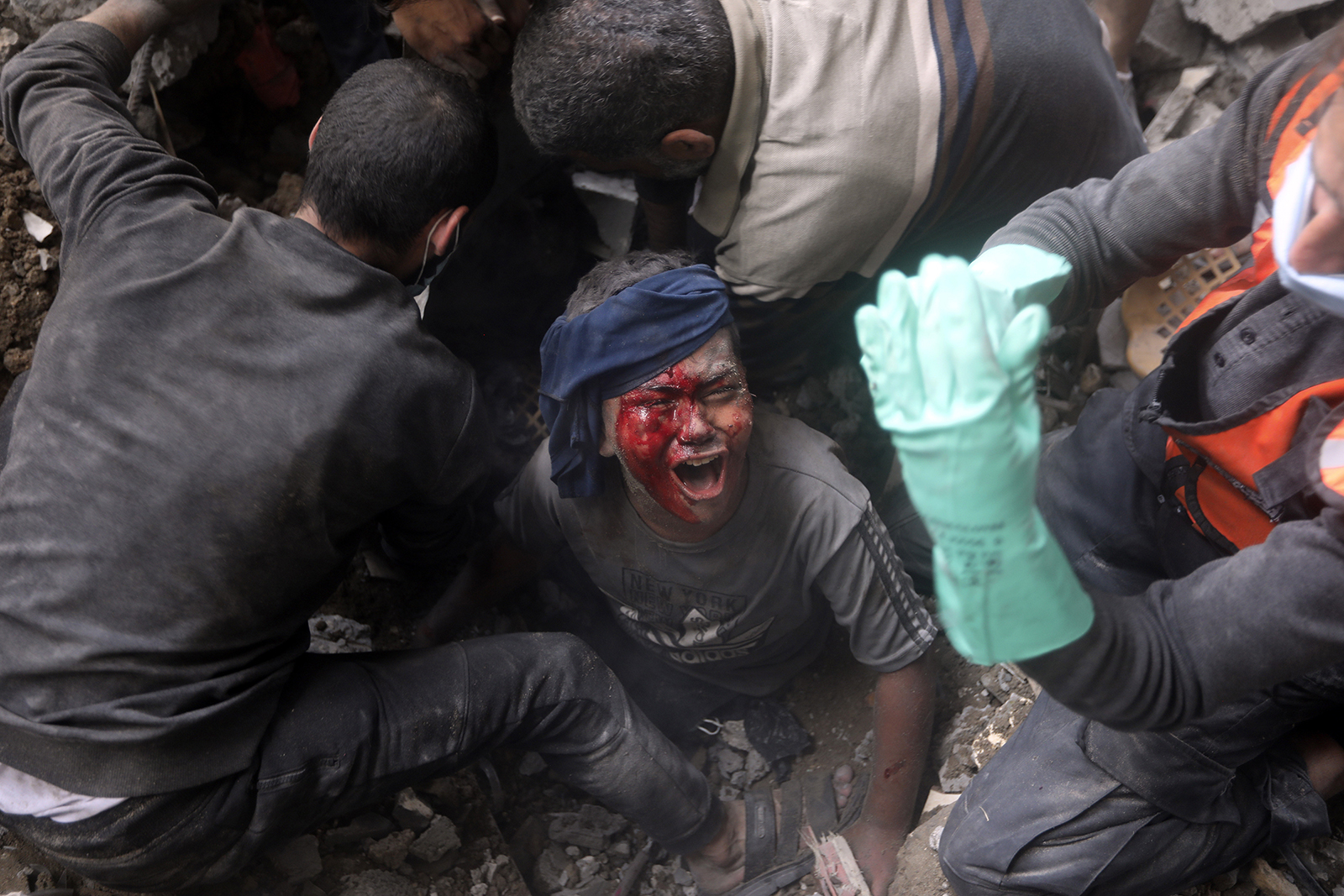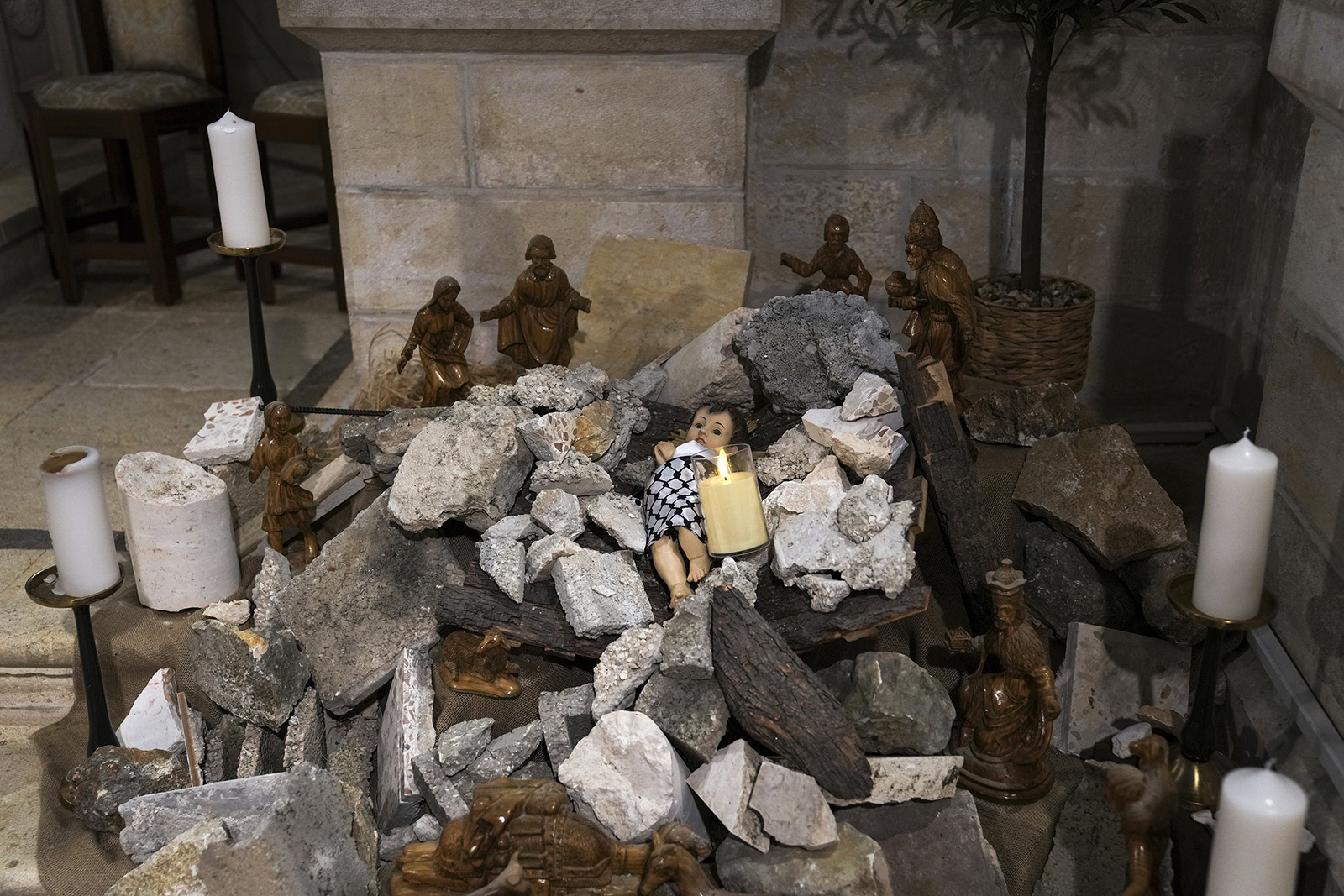
Israeli soldiers walk past houses destroyed by Hamas militants in Kibbutz Be’eri, Israel, Saturday, Oct. 14, 2023. The kibbutz was overrun by Hamas militants from the nearby Gaza Strip on Oct.7, when they killed and captured many Israelis. (AP Photo/Ariel Schalit)
(RNS) — As their March cover story, Christianity Today published an article ostensibly about Hamas’ ideological roots. While not a pleasant topic, it is an important one to tackle, lest the violence of Oct. 7 be repeated in the future. The article’s title promised to unpack the “evil ideas behind October 7” and their “grotesque ideological history.”
After reading the article numerous times, I’m certain author Mike Cosper did not fulfill these promises nor that it was his primary goal. His description of the murderous antisemitism of Hamas is chilling, and his condemnation of Hamas is critically important, but Cosper doesn’t give any insight into the origins of Hamas, the contours and evolution of its ideology or its own articulation of why it attacked Israel. Instead, he reduces Hamas’ ideology to a couple of talking points about the group’s antisemitism that are basically true but unenlightening, and then he gets on with a broader agenda.
In addition to these condemnations of Hamas, Cosper seems to pursue two additional priorities: (1) to associate Palestinians in general and their allies (“anticolonialists,” is the word he uses) with Hamas and Nazis, rendering them deserving of “unflinching moral judgment” and (2) to associate the suffering of the Israelis on Oct. 7 with the passion of Jesus. I respond to the first theme only briefly, trusting that, as a recent Pew survey seems to suggest, readers can differentiate between governments, leaders and general populations on both the Israeli and Palestinian sides.
Others have aptly compared Hamas’ violence to the Holocaust, but Cosper goes further. This is where the argument loses its way. What starts and ends as a narrowly defined critique of Hamas’ ideology is bogged down in a sludge of comparisons between Hamas, Nazi ideology, Palestinians with no affiliation to Hamas and anticolonialism. For Cosper, the groups are all dangerously ideological and antisemitic, and these similarities are decisive. The article could have been called “Hamas is like the Nazis, and so are Palestinians in general and so are their allies.” Whether Cosper intended to create this impression, the inclusion of these groups in an article about Hamas’ ideology and its roots is strongly suggestive. In sweeping these groups together, Cosper’s logic is careless, misleading and threatening. The Christian commitment to peace requires clear condemnation of warmongers wherever they are, whether in Hamas, the IDF, elected leadership or elsewhere. But Cosper is not practicing the moral clarity that he calls for, which would require distinguishing between Hamas and other Palestinians — identities he is not working very hard to differentiate.
But the most troubling part of the article: Cosper uses the comfort of Jesus like a partisan.
Cosper’s tender reflections on the “common threads” between the violence carried out against Christ’s body at Golgotha and the violence of Hamas against Jewish and other bodies on Oct. 7 is deeply moving. His descriptions of the violence and devastation suffered in places like Kfar Aza on Oct. 7 are excruciating, poignant and sorrowful. Cosper is exemplifying the Christian practice of mourning with the mourning.
Unfortunately, when it comes to Palestinian sorrow, Cosper appears disinterested in appealing to Jesus’ identification in suffering. He doesn’t make the same connection between the violence against Christ’s body and the violence against the more than 30,000 Palestinians gone from the earth in Gaza. Nor does he invite his Christian readers to mourn with those left behind. He makes a gesture or two, but always in the service of some critical point. In fact, he criticizes Palestinian attempts to draw close to Jesus and to wrestle in their hearts and minds with the devastation.

An injured Palestinian boy cries as rescuers try to pull him out of the rubble of a destroyed building after an Israeli airstrike in Bureij refugee camp, Gaza Strip, Nov. 2, 2023. (AP Photo/Mohammed Dahman)
Located a short walk from the traditional birthplace of Jesus, an evangelical Lutheran church in Bethlehem made a different kind of creche this past Christmas. The infant Jesus was laid on a mound of concrete rubble and wrapped in a keffiyeh (a traditional Palestinian scarf), the other figures were placed at a distance from the child. This creche evoked the anguish of families desperately searching for children among the ruins in Gaza, a reality so repeated it has become iconic.
How does Cosper respond to this expression of grief? He takes exception with a detail. He claims, with the doctrinaire certainty of an expertise he does not have, what the keffiyeh means, that it is a symbol of terrorism and antisemitism. But of course, symbols mean different things in different communities. Ask a random sample of people from around the world what the American flag means to them — you will get very different answers. Cosper’s comments about the keffiyeh reveal more about his own limited perspective than they do about the questions and concerns the Palestinian Christians were wrestling with at Christmas.
The Rev. Munther Isaac, the pastor of the church, talked a lot about the creche — in fact, he preached a sermon using the creche as a visual aid. If Cosper listened to the sermon, he heard pleading and lament but also Christian comfort from a Palestinian pastor for his broken-hearted congregation: “Where is God?” Pastor Isaac asked.
“In this season, we are troubled by the silence of God … why have you forsaken Gaza? In our pain, anguish, and lament, we have searched for God and found him under the rubble in Gaza. Jesus himself became the victim of the very same violence … He himself cried out in pain ‘my God, where are you?’ If Jesus were to be born today, he would be born under the rubble in Gaza … When we justify, rationalize and theologize the bombing of children, Jesus is under the rubble.”
“This (gestures toward the creche) is his manger. He is at home with the marginalized. This (gesturing toward the creche) is the incarnation: messy, bloody, poverty … And this child (gesturing toward Jesus, wrapped in a kaffiyeh) is our inspiration. We can see him in every child pulled from under the rubble. We look at the holy family, and see them in every family displaced. While the world discusses the fate of the people of Gaza as if they are unwanted boxes in a garage, God, in the Christmas narrative, shares their fate.”

An installation of a scene of the Nativity of Christ with a figure symbolizing baby Jesus lying amid the rubble, in reference to Gaza, inside the Evangelical Lutheran Christmas Church in the West Bank town of Bethlehem, Sunday, Dec. 10, 2023. (AP Photo/Mahmoud Illean)
This community of Christians is contending with the decimation of their families and the ruination of their world. They are lamenting, pleading and mourning. They are the psalmist crying out to God from a very dark place. Does Cosper believe the comfort of Jesus is for them? If he does, he has a horrible way of showing it.
If Cosper had only stuck narrowly to the promises his title makes, it might have been a better article.
Jesus is perishing among the 30,000 Palestinians who have died in Gaza as much as he was slaughtered alongside the residents of Kfar Aza. Mike Cosper, take a moment to recognize the resonance, the similarity, the same Christian charity in your “common threads” and in your brother, Rev. Isaac’s “Christ Under the Rubble.” Any ideology that seeks to diminish or condition the comfort and presence of Jesus from places of human suffering is not the Gospel, and it is not an expression of moral clarity. To quote Cosper’s last sentence, if we are struggling to see it, we need to ask why.
(Ben Norquist serves as the Ambassador Warren Clark Fellow at Churches for Middle East Peace, where he studies the shrinking space for civil and human rights activities in Israel. He is also working on a book about how American Christians engage with land and place, due in 2025. The views expressed in this commentary do not necessarily reflect those of Religion News Service.)




